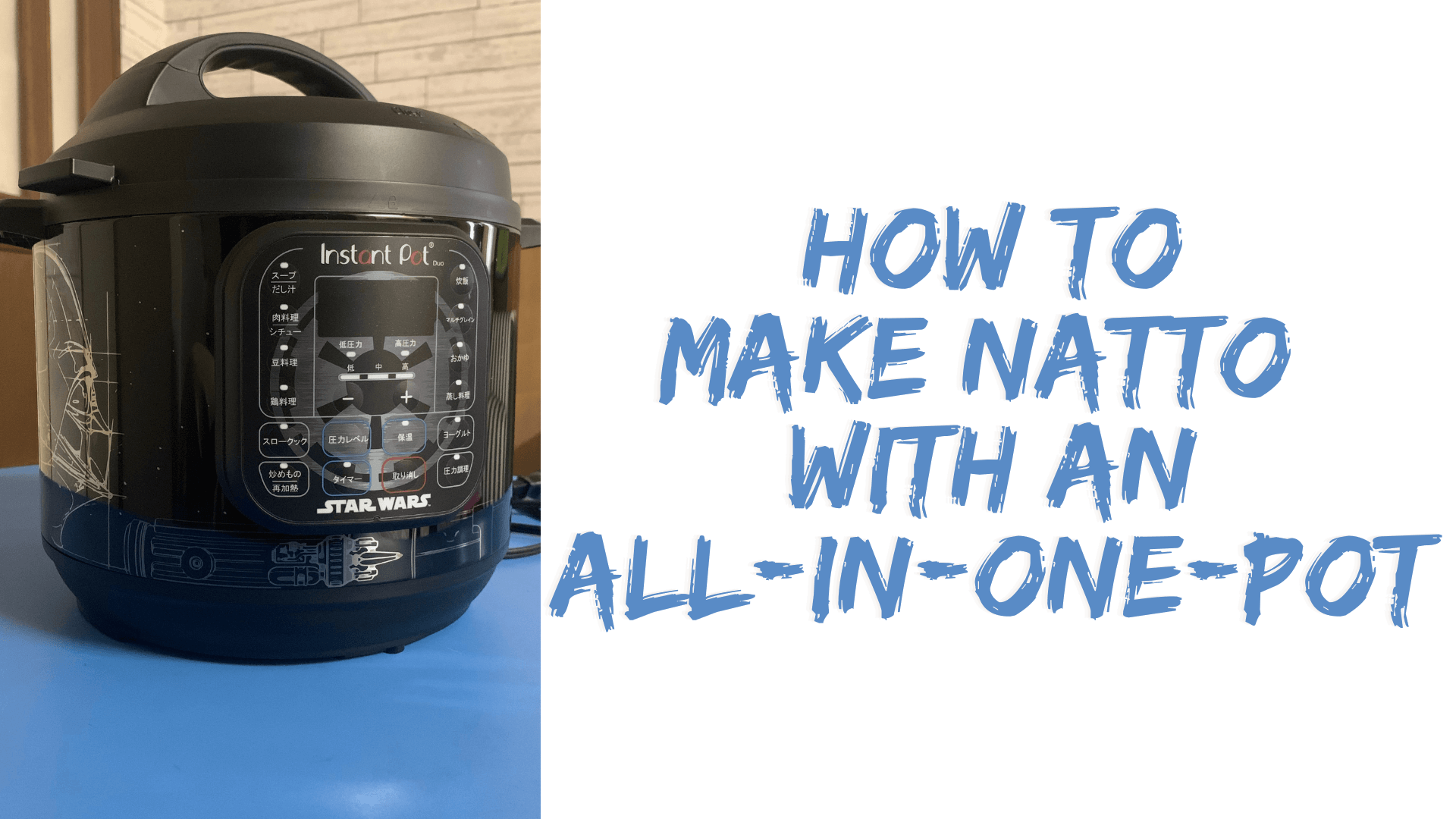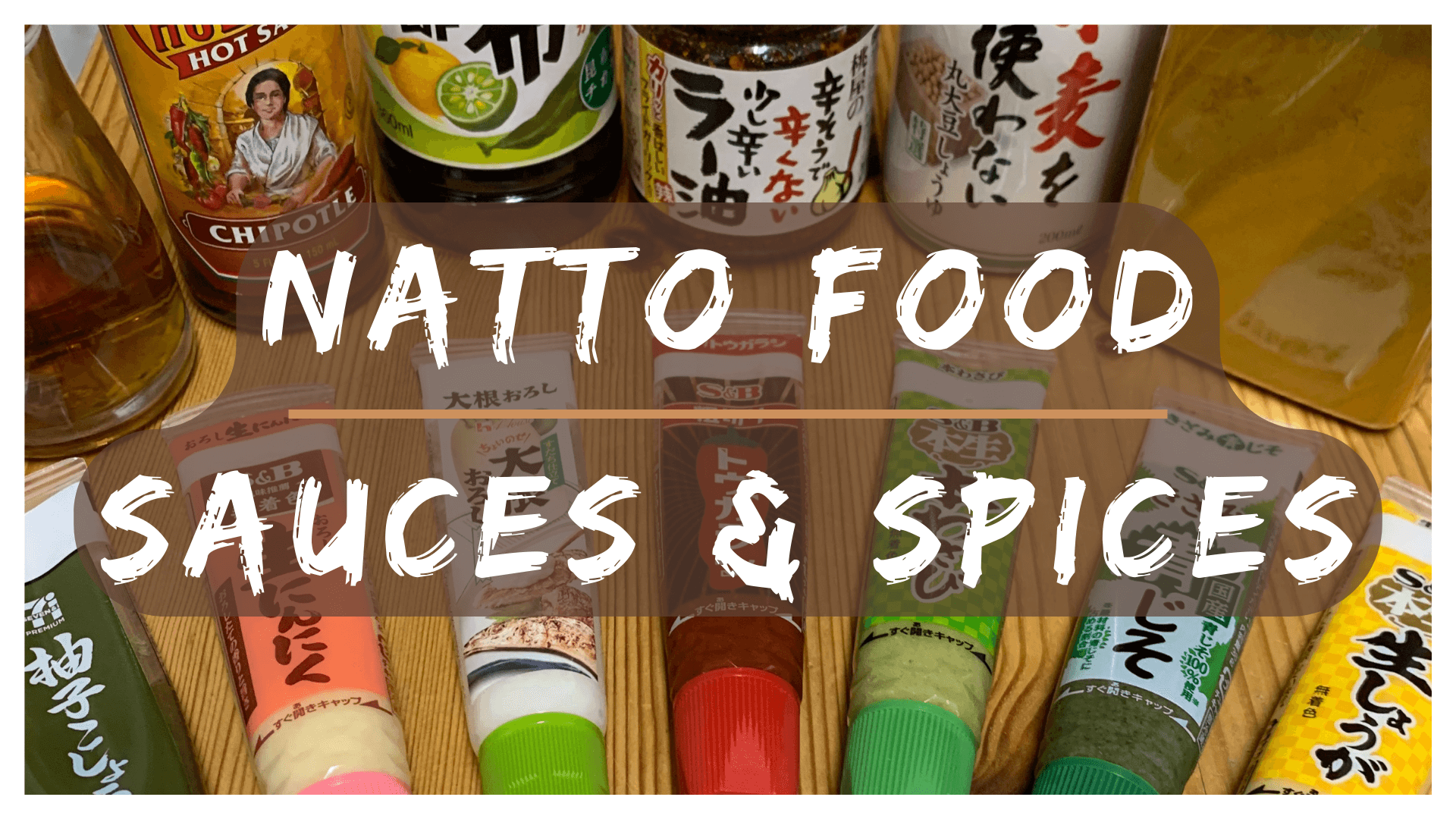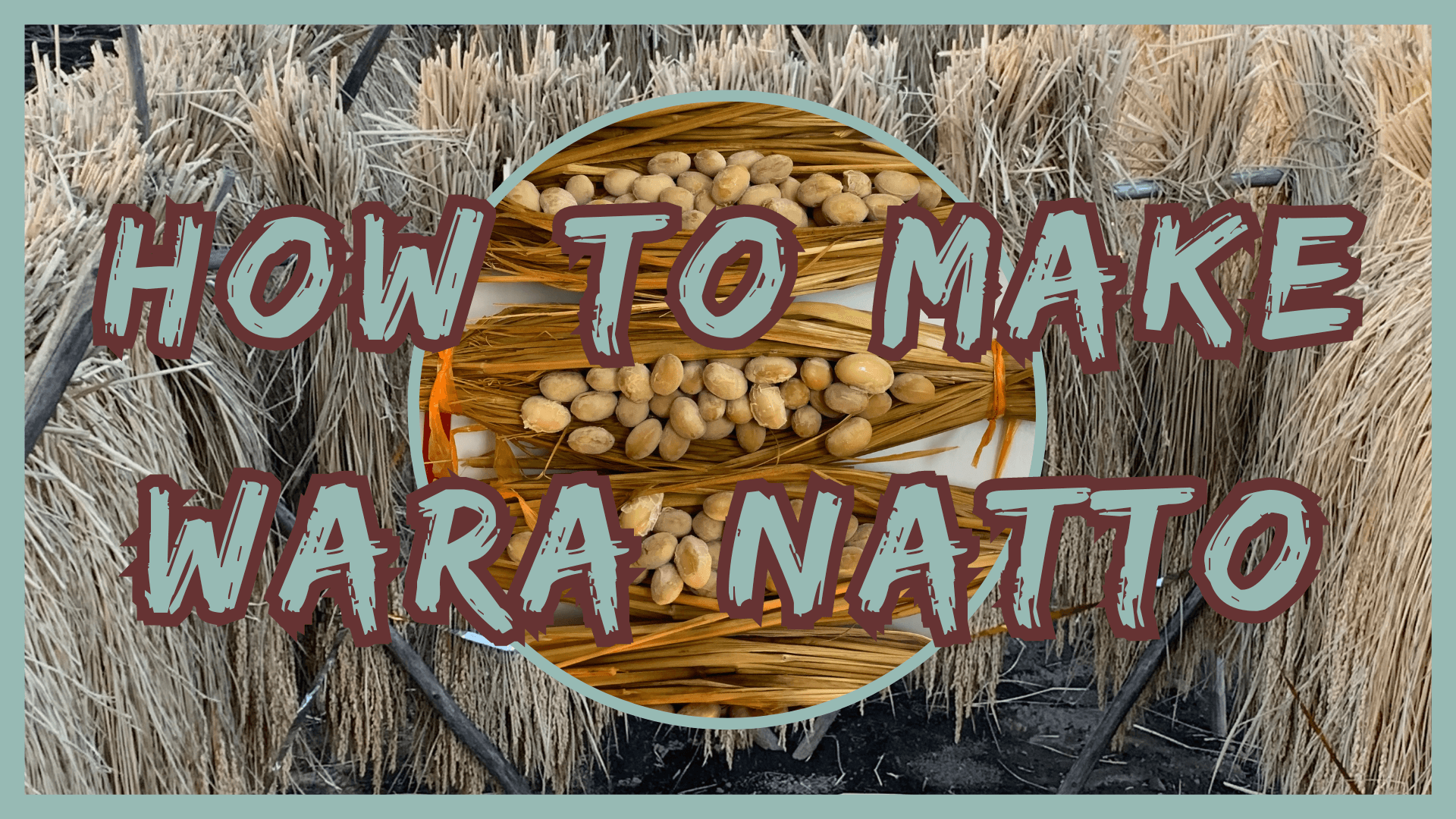- Natto
- Make Natto with All-In-One-Pot
How to Make Natto with an All-In-One-Pot
Simply Natto is a participant in the Amazon Services LLC Associates Program,
and as an Amazon Associate I earn from qualifying purchases.
Let's learn how to make natto!
I'm going to teach you how to make your own sticky, stringy beans using an all-in-one-pot.
Making fermented soybeans isn't as difficult as it sounds, and all you need are a few things to create your very own homemade natto.
Here are the things you'll need before getting started:
- Bacillus subtilis natto (bacterium / natto starter) or Natto (fresh or frozen)
- All-In-One-Pot
- Stainless pot for fermenting (sterilized)
- Soybeans
- Bowl for soaking the soybeans
- Strainer
- Steaming basket
- Measuring cup
- Measuring spoon (10ml)
- Stirring spoon
With the necessary items on the list prepared, you're ready to make your own fermented soybeans in 6 easy steps.
Step #1: Wash the Soybeans
Step #2: Sterilize Cooking Utensils
Step #3: Steam the Soybeans
Step #4: Prepare Natto Starter
Step #5: Ferment the Soybeans
Step #6: Refrigerate the Natto
Are you ready to start making some sticky, stringy Natto Goodness?
Then Step One awaits!
Natto Talk
Want to chat about Japanese fermented soybeans and how you can better enjoy this Japanese superfood?
Subscribe to Natto Talk!
A monthly publication containing info about:
- Things relating to natto
- Simply Natto's "Natto Recipe of the Month"
- Japan and its culture
- Updates made to the Simply Natto website and its social media pages
- Any upcoming product drops or projects
So what are you waiting for?
Fill out the form below and join.
I look forward to sharing my natto journey with you and learning about yours.

Simply Natto: Natto Lingo

作り方
(tsukurikata)
"tsue-coo-ree-kaw-tah"
- how to make
手作り
(tezukuri)
"teh-zoo-coo-ree"
(slightly roll the "r")
- homemade, handmade
How to Make Natto - Step One
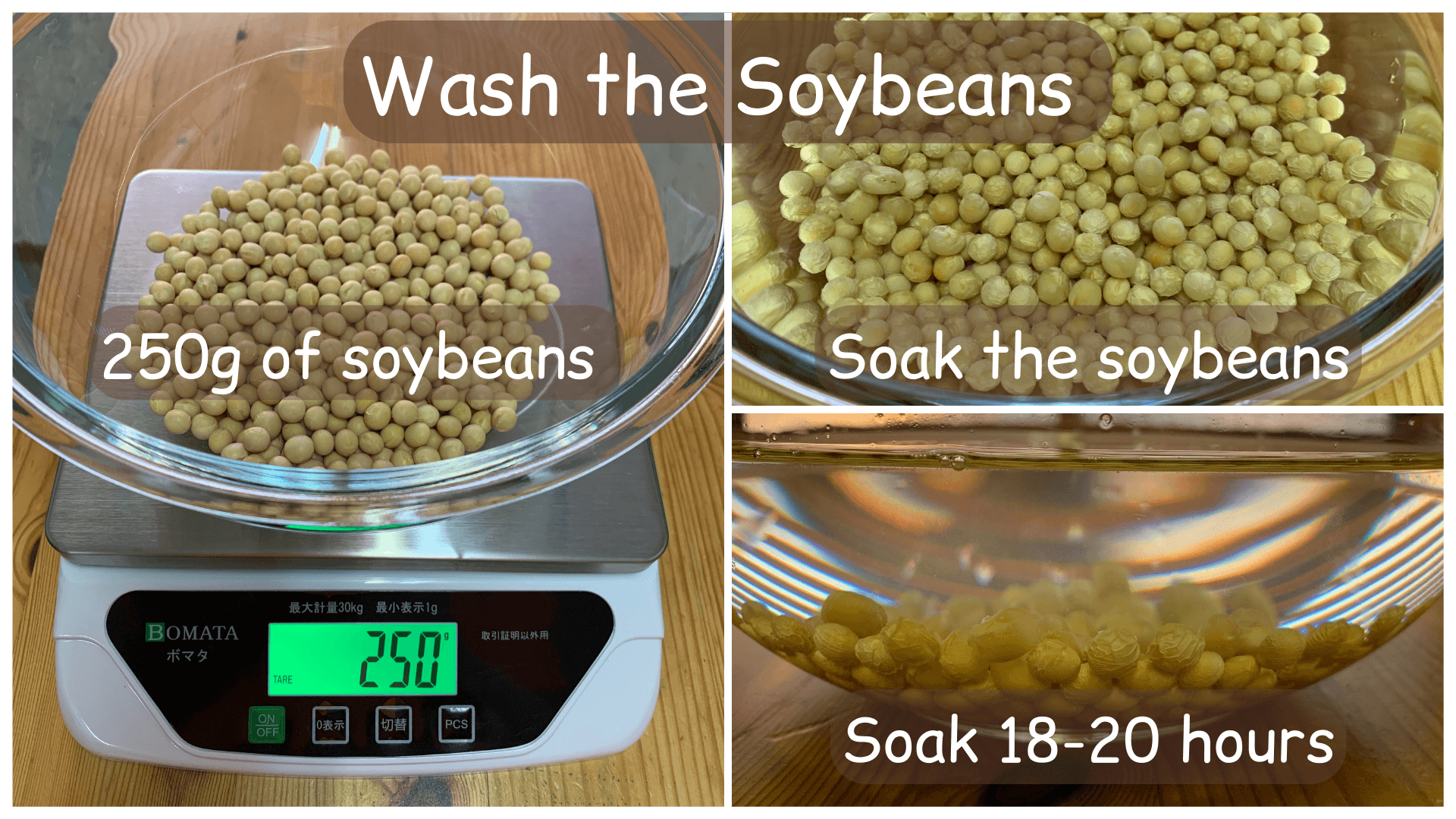
The first step is to wash the soybeans.
Measure out the amount of beans you want to turn into natto and put them into a large bowl for washing.
I recommend starting out with 250g.
This will give you about 5-6 servings.
The packages of natto sold here in Japan generally contain 40-50g, and most Japanese people (including myself) feel eating one package in a day is sufficient.
Put your soybeans into a bowl and slowly fill it with water (make sure the beans are submerged under the water - the soybeans will expand and soak up some of the water).
While being careful not to peel off any of the skin around the soybeans, gently move the beans around under the water with your hand.
If any skin does fall off just remove it from the bowl.
Drain the water from the bowl and repeat the washing process 1-2 more times.
After draining the water, refill the bowl with 1000ml (4 cups) of clean water for soaking.
The beans should be submerged under the water and soaked for 18-20 hours.
How to Make Natto - Step Two
The second step is sterilizing the stainless pot and stainless utensils.
While the soybeans are soaking, it's a good time to sterilize the stainless pot and stainless utensils you'll use when fermenting the beans.
Put the stainless pot into your machine and pour in 750ml (3 cups) of water.
Put your stainless steaming basket into the pot and place your stainless utensils in the basket.
Securely close the lid and make sure the vent is in the "Sealing" position.
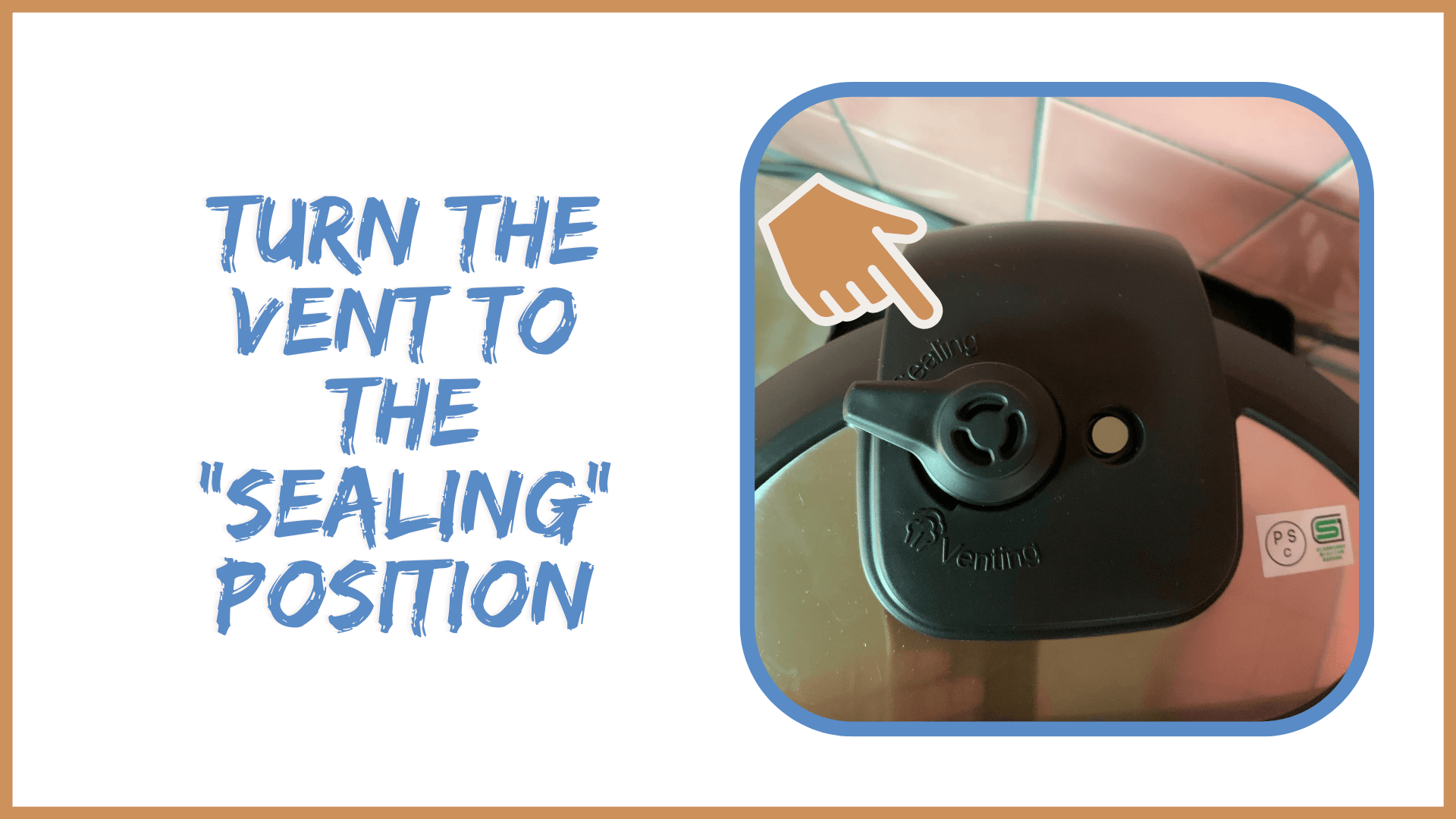
Select the "Steam" function and press the (+) or (-) buttons to set the timer to 15 minutes.
After a few seconds "On" will display on your all-in-one-pot screen.
It will take about 10 minutes or so for the 15-minute timer to be displayed and for the steaming to start.
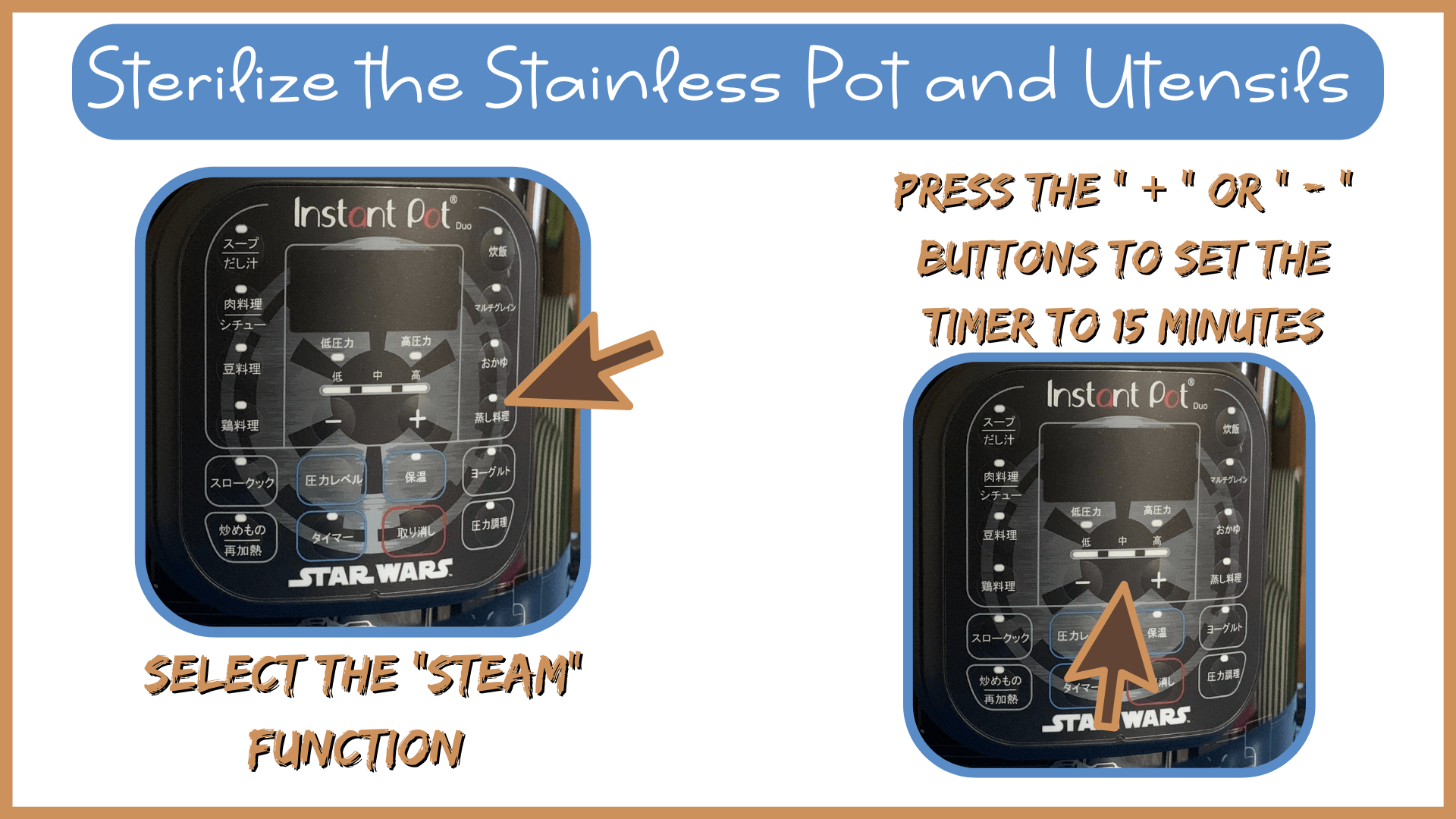
**After the time is up don't open the lid right away.
The pressure inside your all-in-one-pot needs to be released and there are two ways you can do this.
The first way is a "natural release."
Allow the main body of your all-in-one-pot to cool down and the float valve to lower.
The time for this approach can vary from 10-40 minutes, or sometimes longer.
Once you have confirmed that the float valve has lowered, put on oven mittens and move the internal pressure release vent to the "Venting" position.

Wait a moment to make sure all of the internal pressure has been released.
While holding onto the lid handle, slowly turn the lid to the "Open" position and lift it off.

The second way is a "quick release."
Once the steam cooking has finished, press the "Cancel" button.
**Please use caution when doing the following step.
Put on oven mittens and move the internal pressure release vent to the "Venting" position.
Hot steam and water will be released out of the vent very quickly and you don't want any of that to get on you.
Step back from your all-in-one-pot after moving the vent and monitor the steam coming out of the vent.
As the steam coming out starts to slow, monitor the position of the float valve.
After confirming that the float valve has lowered and there isn't any more steam releasing out of the vent, you're ready to open the pot.
The time for this approach can vary from 2-3 minutes, or sometimes longer.
With your oven mittens on, remove the lid and set it aside.
Remove the steaming basket and cooking utensils.
Take out the sterilized pot and discard the water.
Set aside the sterilized cooking utensils until you finish Step Three.
Put the sterilized pot back into your machine and start preparing the soybeans for steaming.
How to Make Natto - Step Three
The third step is steaming the soybeans.
Take out a strainer and drain the water from the bowl used for soaking the soybeans.
Look over the soybeans and remove any bad ones or any skin that has fallen off.
Put the beans into your stainless steaming basket.
Take out a measuring cup and fill your all-in-one-pot with 355ml (1.5 cups) of clean water.
Then put the steaming basket inside the pot.

**Let's repeat the steps you took in Step Two to sterilize your stainless pot.
Securely close the lid and make sure the vent is in the "Sealing" position.
Select the "Steam" function and press the (+) or (-) buttons to set the timer to 70 minutes.
After a few seconds "On" will display on your all-in-one-pot screen.
It will take about 10 minutes or so for the 70-minute timer to be displayed and for the steaming to start.
**After the time is up don't open the lid right away.
**Remember that the pressure inside your all-in-one-pot needs to be released first.
**Refer to Step Two for the two ways this can be done.
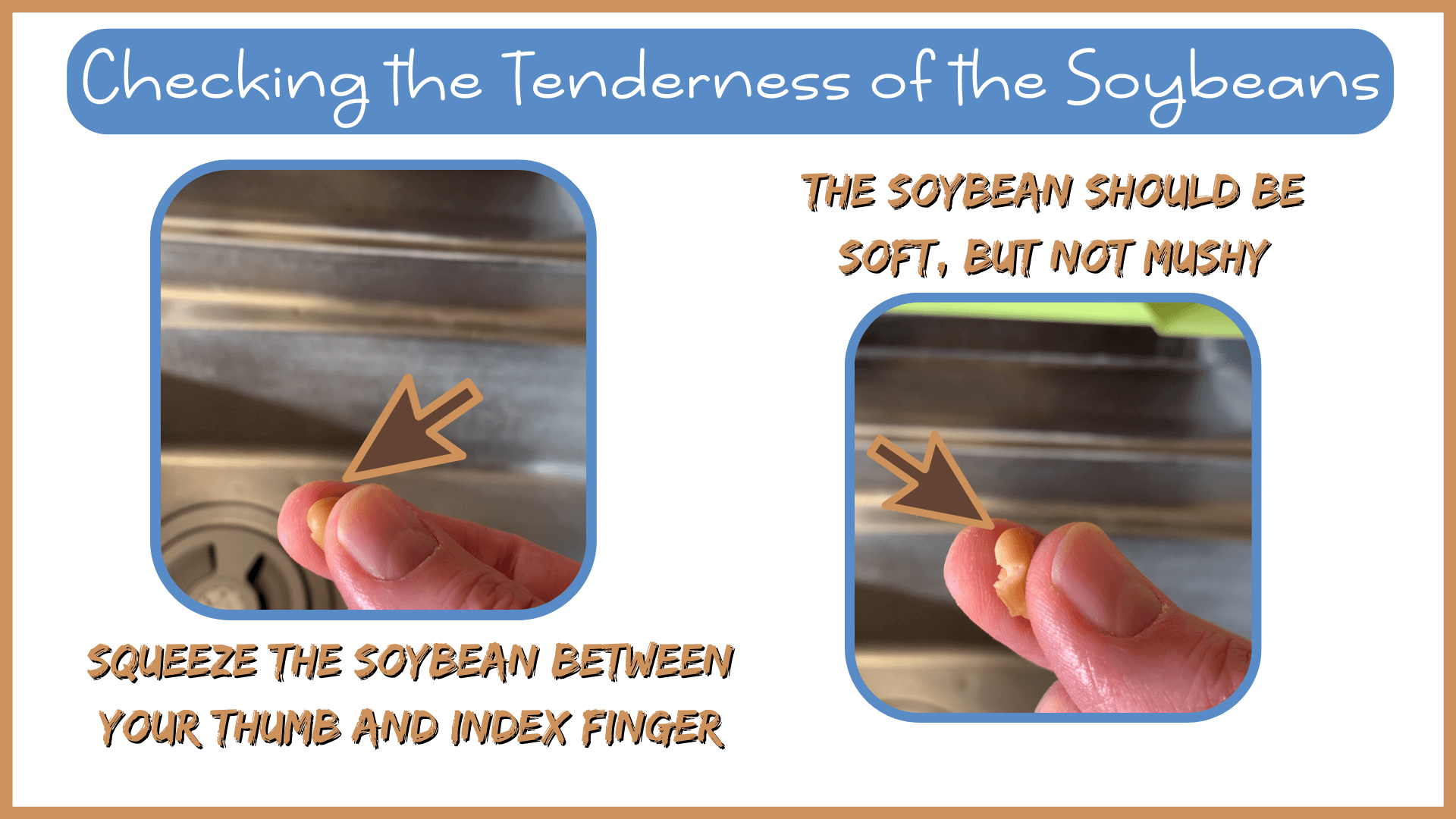
After completing one of the two ways to release the inner pressure in your all-in-one-pot, gently lift the lid and take out a soybean to check the tenderness of the bean.
Put the lid back onto your all-in-one-pot to keep the rest of your soybeans from cooling down.
Squeeze the bean between your thumb and index finger.
You're looking for the beans to be soft, but not mushy.
Once you've confirmed the softness of the bean, you're ready to move on to Step Four.
Simply Natto is a participant in the Amazon Services LLC Associates Program,
and as an Amazon Associate I earn from qualifying purchases.
How to Make Natto - Step Four
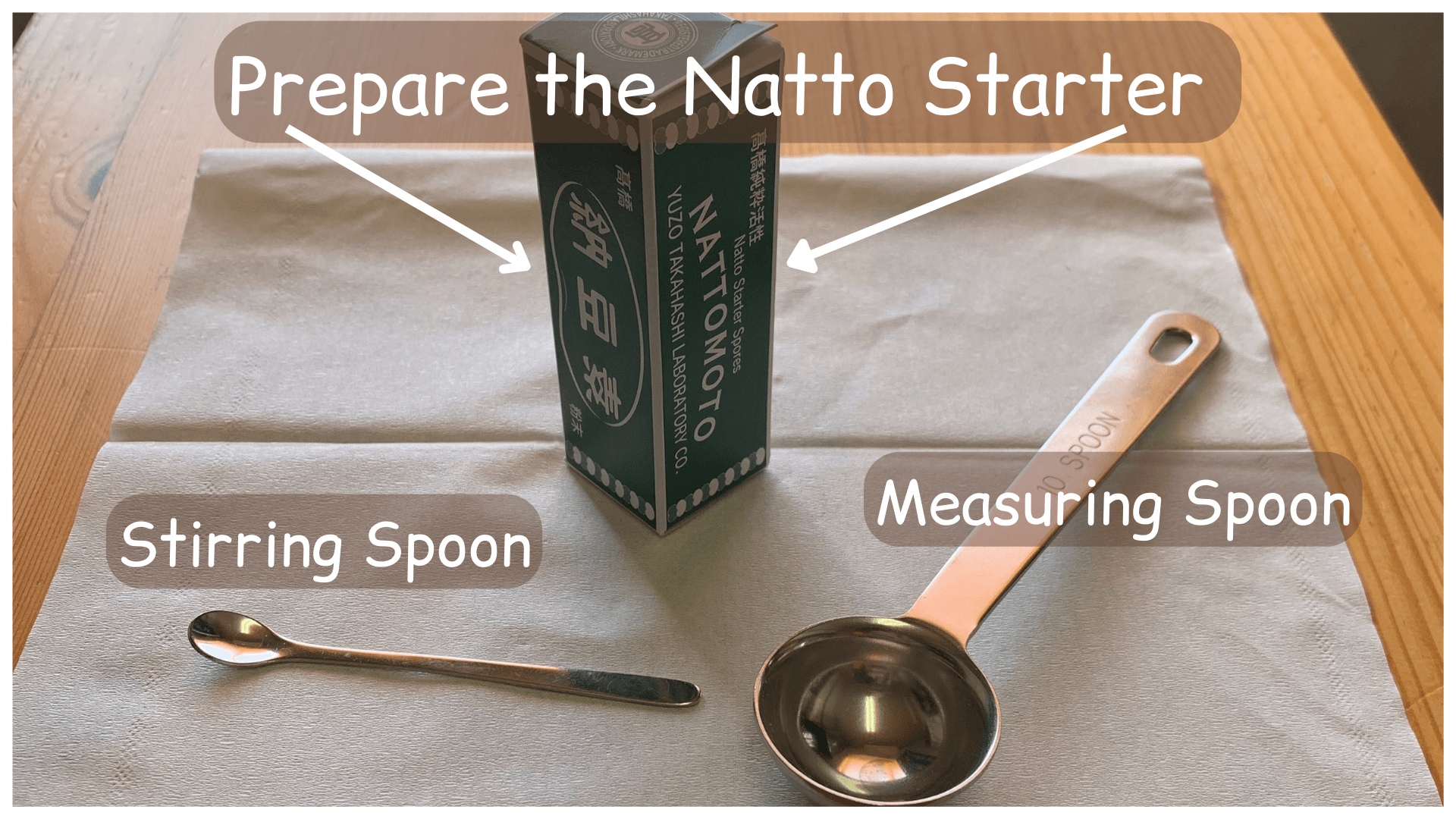 Natto Starter Spores - NATTOMOTO
Natto Starter Spores - NATTOMOTOThe fourth step is preparing your natto starter (Bacillus subtilis natto) and adding it to the steamed soybeans.
Make sure to keep the steamed soybeans in your all-in-one-pot as you prepare the natto starter.
The natto starter that I've been using is called "NATTOMOTO" and I purchased it online through Amazon Japan.
OPTION #1
How to make the natto starter:
- Dissolve 10ml of water (37˚C / 100˚F) with 0.1g of Bacillus subtilis natto.
- Mix it well.
While wearing oven mittens, take out the steamer basket from your all-in-one-pot and discard the water.
The inside of the pot may have soybean residue around the sides.
If so, give the pot a quick rinse with hot water (boiled water from the kettle would do the trick).
Put the pot back into the all-in-one-pot and pour the steamed soybeans into it.
Put the lid back on the machine to keep the steamed soybeans from cooling down too quickly.
Prepare the natto starter and then pour the mixture over the steamed beans and mix it well with a sterilized spoon.
OPTION #2
Use ready-made natto:
Follow the steps above in Option #1 except for preparing the natto starter.
Instead, add a spoonful of the ready-made natto to the steamed soybeans and mix it well with a sterilized spoon.
**Don't let the soybeans cool down too much when you're adding the natto starter or the ready-made natto to the beans.
Now you're ready for Step Five.
How to Make Natto - Step Five
The fifth step is to ferment the steamed soybeans.
Have you finished mixing the natto starter or the ready-made natto with the soybeans?
Great! Now you're ready to ferment the soybeans.
Securely close the lid on your all-in-one-pot.
Leave the vent in the "Venting" position.
(According to the manual the vent can be in either position when using the yogurt function to ferment the soybeans.)
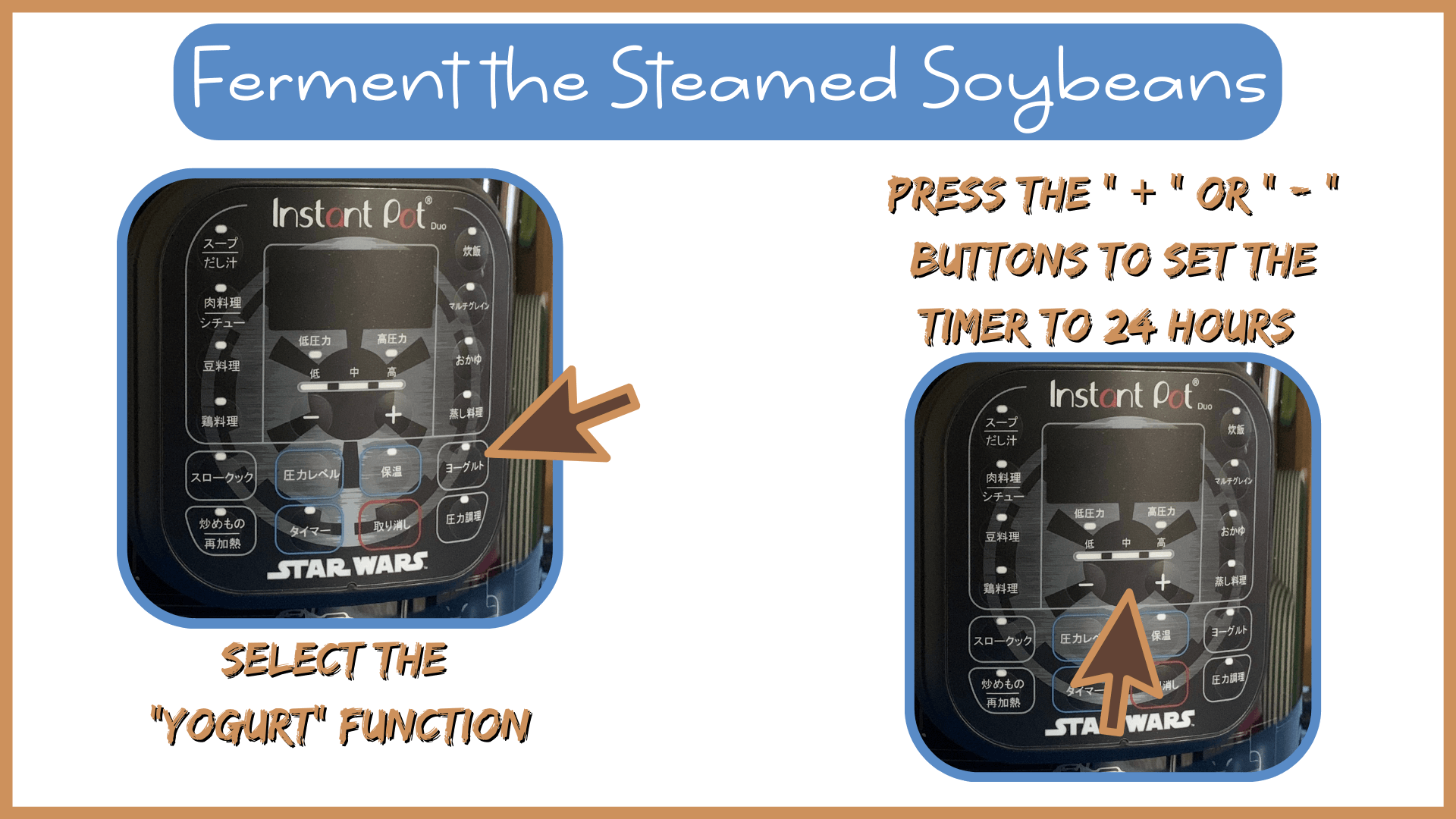
Select the "Yogurt" Function.
Set the temperature to "Normal" (36˚C - 40˚C / 96.8˚F - 104˚F).
Set the timer to 24 hours by pressing the (+) or (-) buttons.
After a few seconds the timer will start and you'll be 24 hours closer to creating your very own Natto Goodness.
When the timer ends you're ready for Step Six.
Simply Natto: Natto Lingo

大豆
(daizu)
"dye-zoo"
- soybeans
発酵させる
(hakkosaseru)
"hawk-co-saw-say-roo"
(slightly roll the "r" in "roo")
- ferment
How to Make Natto - Step Six
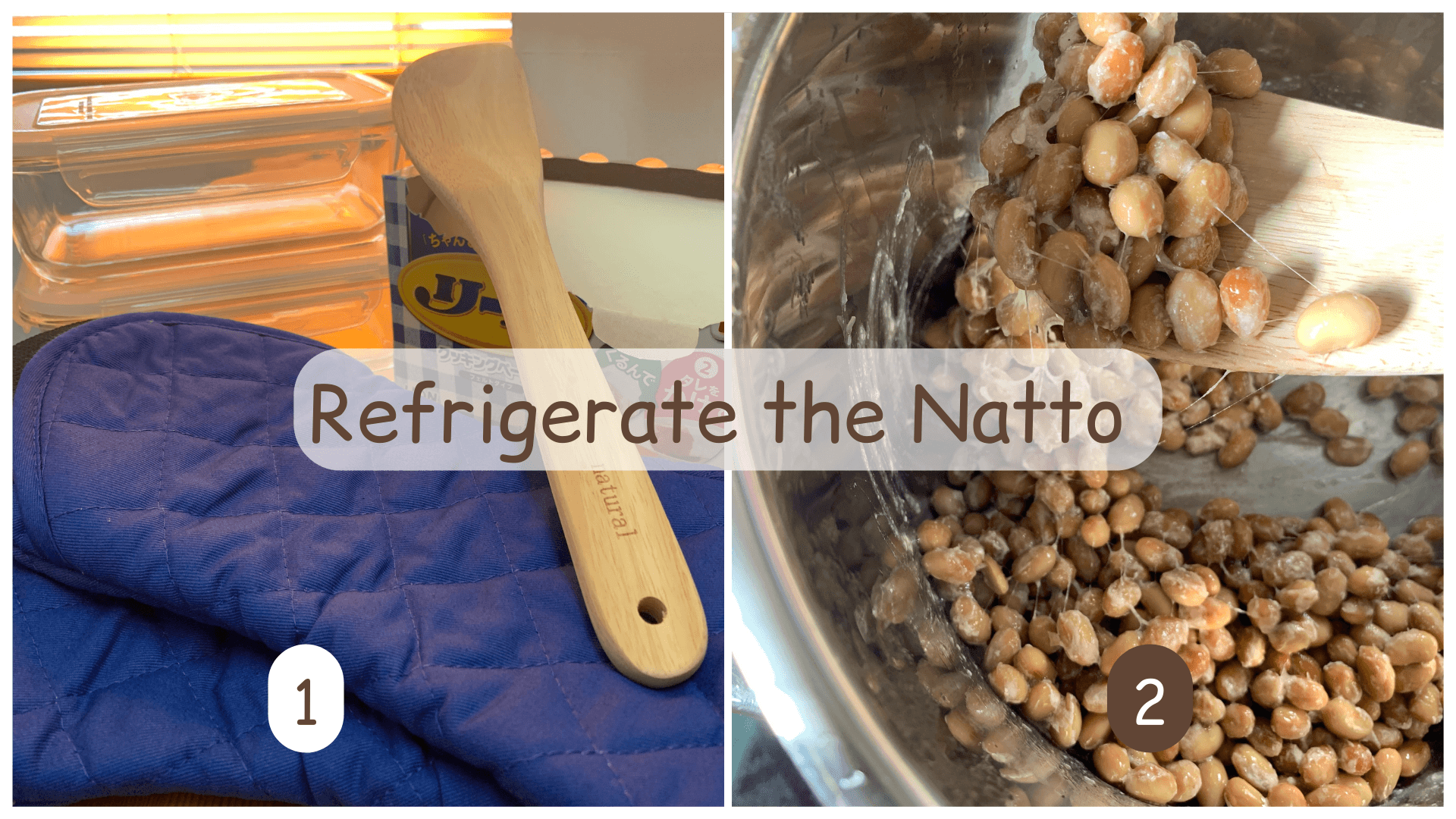
The sixth step is to transfer your fermented soybeans to the fridge.
After your soybeans have been fermented for 24 hours you should see a whitish film covering the beans.
There'll also be an ammonia smell from the fermentation.
Transfer your freshly made natto into one or two medium-sized containers with lids, or into 5-6 smaller containers (one for each serving (40-50g) - look at pictures 1 & 2).
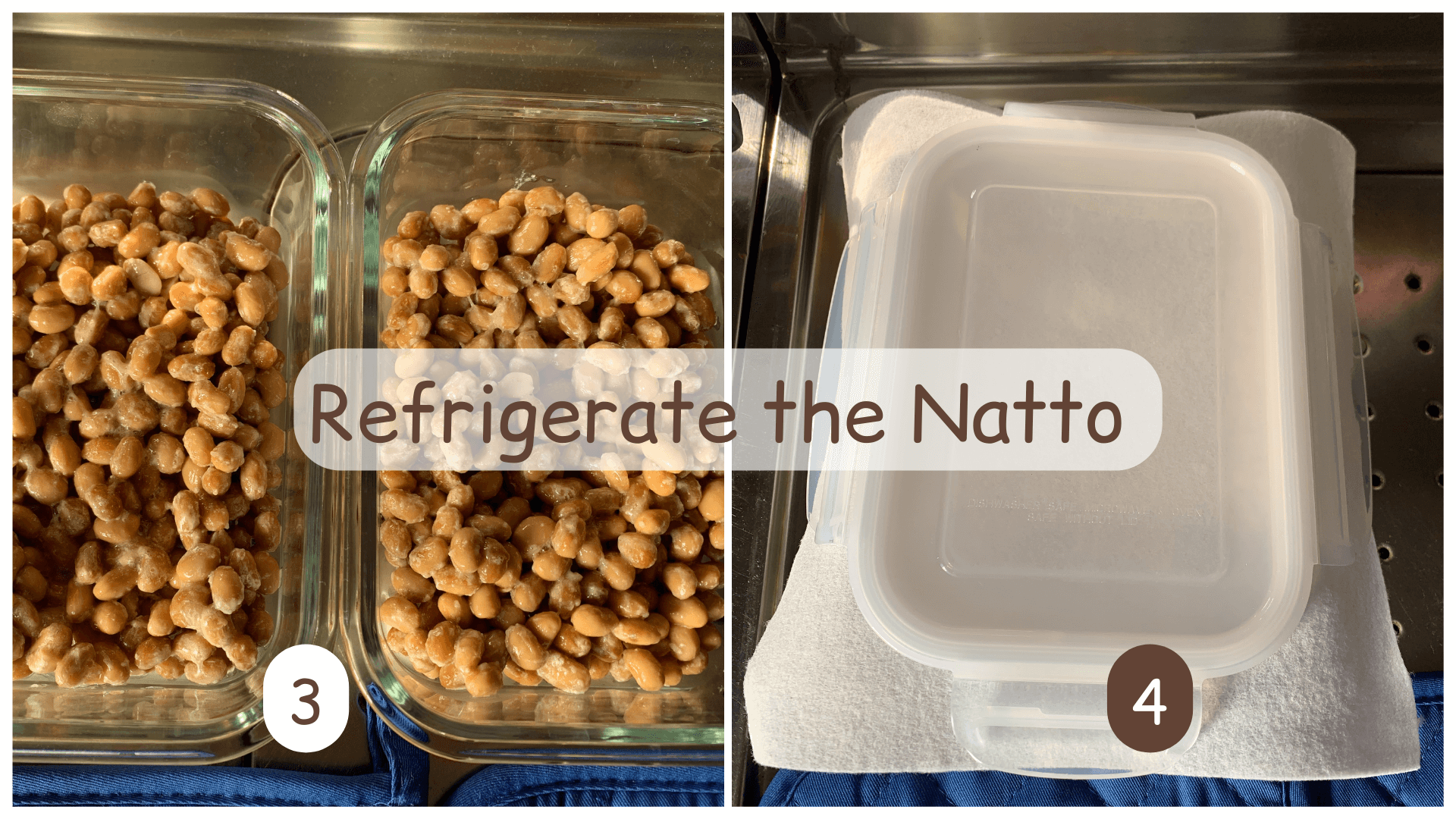
Cover the container with a sterilized cloth/cooking paper and securely close the lid - (look at pictures 3 & 4).
This prevents water droplets from falling on the soybeans and prevents the beans from drying out.
Put the container(s) into the fridge for 24-48 hours before eating your fermented soybeans.
This helps to remove the smell of ammonia and enriches the "umami" of the natto.
Simply Natto: Natto Lingo

豆
(mame)
"maw-may"
- beans
旨味
(umami)
"oo-maw-me"
- taste, flavor, savoriness
What to do Next?
With your homemade natto all made and put away in the fridge, it's time to clean up.
Here's how to remove natto sliminess and smell from your all-in-one-pot, cookware and tableware in 4 easy steps.
When your fermented soybeans are ready to be eaten, here are 10 "What to Eat with Natto" ideas for you to try.
いただきます。 "ee-taw-daw-key-maas" - Let's Eat!
Keep up with the latest Natto Goodness by following Simply Natto on social media
The Latest Natto Talk
-
Natto Food with Sauces and Spices
Natto food with sauces and spices is a traditional and simple way for you to enjoy natto. It's a great way for you to savor some fermented soybean goodness. -
How to Make Wara Natto
Let's learn how to make wara natto. For centuries, Japanese natto has been made using rice straw, and now you can make it too. -
How to Make Natto with an All-In-One-Pot
Let's learn how to make natto! I'm going to show you how to make your own sticky, stringy beans using an all-in-one-pot. -
How to Make Hojicha Natto
Let's learn how to make hojicha natto! I'm going to teach you how to make your own sticky, stringy beans with a roasted green tea twist in 6 easy steps. -
How to Make Coffee Natto
Let's learn how to make coffee natto! I'm going to teach you how to make your own sticky, stringy beans with a java twist in 6 easy steps.
